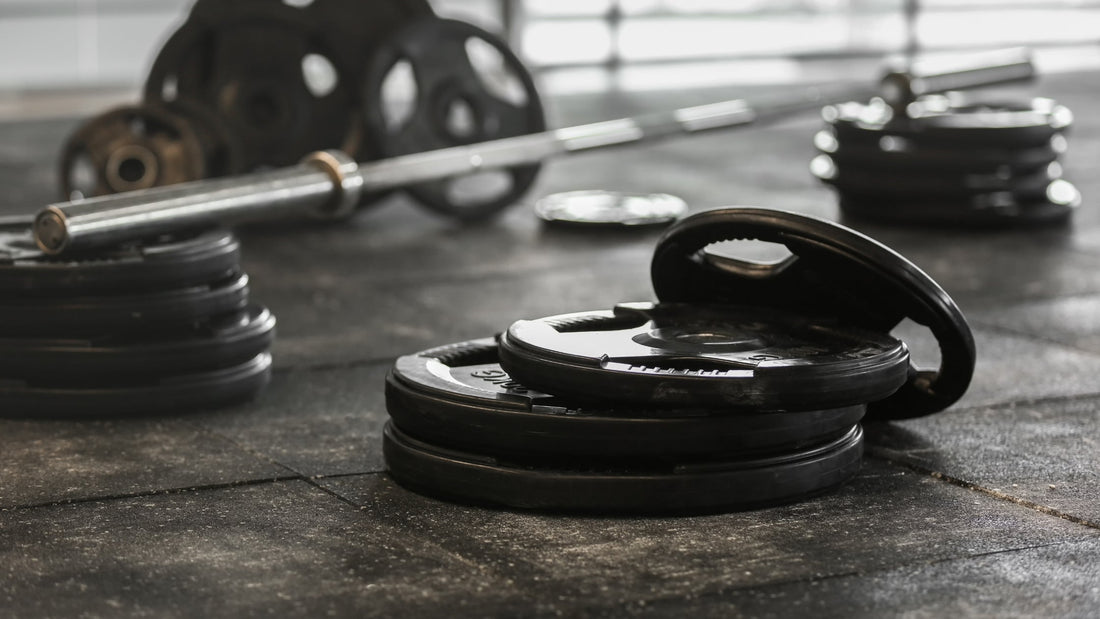
Barbell Grip Tape: Pros, Cons, and Smarter Alternatives
Share
Barbell grip tape promises quick traction: wrap a few turns where you hold the shaft, add a touch of cushion, and pull. You’ll see it in gyms that restrict chalk, on barbells with worn knurling, or for lifters who want a consistent “hands go here” landmark. But tape brings trade-offs—residue, diameter changes, hygiene—and better ways exist to get dependable hold without turning a shared bar into a sticky project. Here’s a clear look at barbell grip tape, when it helps, when it hurts, and how combining straps with PTI Grip delivers cleaner, faster, more consistent training.
What lifters want from tape
-
Tack and texture when the knurl is too passive or chalk is banned.
-
Micro-padding over tender calluses.
-
Landmarks for repeatable hand placement.
The downsides most people discover later
-
Residue and grime: Adhesive picks up skin, sweat, dust, and chalk; it gets slick over time. Cleaning a taped shaft is a chore.
-
Diameter creep: A few millimeters sound small, but they change finger angles and your start position.
-
Uneven layering: If wrap tension varies, ridges form under load and encourage bar roll.
-
Gym policies: Many facilities prohibit tape on shared barbells to protect equipment.
(If you’re curious about the broader category, look up athletic tape on Wikipedia for a general overview.)
Smarter tape alternatives
-
Fix the hands, not the bar: File rough calluses; moisturize lightly on off days; keep nails tight. Healthy skin grips.
-
Use chalk judiciously: A thin dusting beats caked-on paste.
-
Choose the right implement: Aggressive knurl for heavy pulls, milder knurl for high-rep accessories when possible.
Where PTI Grip fits
PTI Grip gives you a repeatable, high-friction interface without altering the bar. The patent-pending clamp snaps over the shaft, tightens as you close your hand, preserves native diameter, and transmits the knurl’s texture. No residue, no policy issues, no scraping adhesive between sets.
-
Warm-ups and volume: Clamp on for consistent hold when knurl is tired or hands are beat up.
-
Cable/machine attachments: Where tape isn’t allowed and chalk doesn’t help, the clamp excels.
-
Time savings: Two seconds on/off keeps you in rhythm—gold in circuits and supersets.
Explore it here: PTI Grip. Read why it was built: Our Story.
Straps still have a secure seat at the table
-
Use straps for maximal deadlifts and high-stress work where leverage must be unquestionable.
-
Use PTI Grip before and after those top sets to keep tempo high and hands comfortable.
-
Keep raw grip alive with brief carries or hangs so your hands strengthen alongside posterior-chain gains.
If you still choose barbell grip tape
-
Keep wraps thin and even; fewer layers mean less diameter change.
-
Replace regularly before tack turns slick.
-
If it isn’t your bar, ask first—and don’t leave adhesive for others to clean.
A better way forward: Tape solves for traction and repeatability, but so does PTI Grip without the mess. Pair PTI Grip for the majority of your sets and stations with straps on the heaviest pulls. You’ll get a cleaner gym bag, faster sessions, and more consistent lifting than any taped bar can offer.
